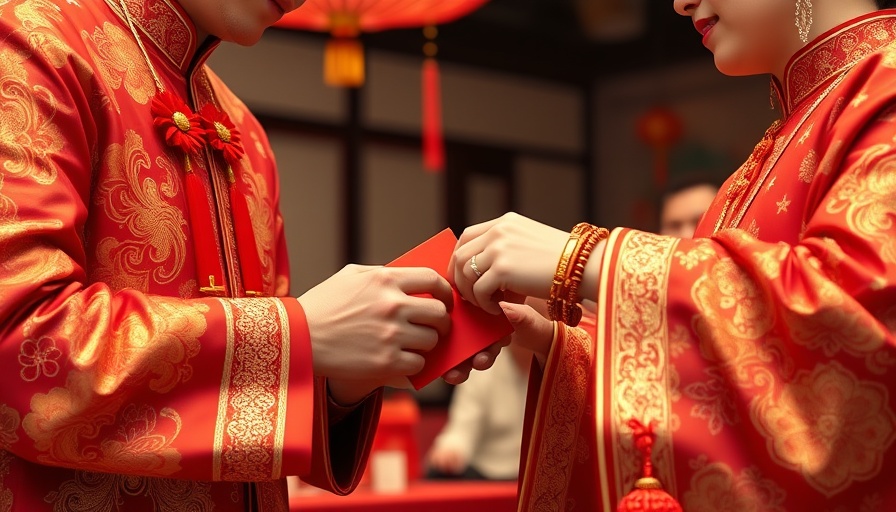
Bridging Tradition and Modernity: The Essence of Chinese Weddings
Weddings are more than mere events; they encapsulate the rich tapestry of culture, reflecting history, values, and family ties. A Chinese wedding, in particular, is a spectacular display of vibrant traditions paired with contemporary influences, creating an unforgettable experience for newly engaged couples. As you embark on your wedding planning journey, understanding the nuances of these traditions can help you craft a celebration that honors your heritage while infusing your personal touches.
The Importance of Symbolism in Chinese Wedding Traditions
At the heart of Chinese weddings lies a remarkable use of colors, notably red and gold. Red symbolizes happiness and prosperity, making it a fixtures in everything from wedding invitations to decor. Couples often use red envelopes filled with money, known as hongbao, to convey blessings during ceremonies. Gold, representing wealth and prosperity, complements red, creating a visually stunning aesthetic that resonates with the couple's family and friends.
Key Traditions to Incorporate into Your Wedding Day
Among the plethora of traditions, two stand out: the betrothal ceremony (Guo Da Li) and the tea ceremony. The betrothal ceremony involves the groom’s family presenting gifts symbolizing goodwill and respect to the bride's family. This age-old custom emphasizes family unity, which remains vital in modern contexts.
The tea ceremony, held on the wedding day, clearly illustrates respect toward parents and ancestors. During this ceremony, couples present tea infused with symbolic ingredients like red dates and lotus seeds while kneeling to serve their elders. This moment not only honors tradition but also marks the couple's transition into their new life together.
Infusing Personal Style into Traditional Elements
With the evolving nature of weddings, many couples today blend these timeless traditions with modern aesthetics. For instance, contemporary brides might combine a white gown with a traditional red qipao during the tea ceremony, demonstrating both respect for their culture and personal style. Moreover, invitations crafted in red with gold luminescence reflect the auspicious colors of Chinese weddings, setting an elegant tone for the celebration.
Choosing the Perfect Venue: Merging Tradition and Modernity
When selecting a wedding venue, consider both traditional elements and personal preferences. Whether it be a lush garden wedding venue adorned with red lanterns or an elegant indoor setting that allows for the tea ceremony, there are countless affordable wedding venues that can bring your vision to life. Popular choices include waterfront and barn wedding venues, each offering unique atmospheres that can embody the vibrancy of a Chinese wedding.
Incorporating Unique Features: The Double Happiness Symbol
A notable motif often showcased in Chinese weddings is the Double Happiness symbol (囍), representing love and marital bliss. Incorporating this symbol into wedding jewelry or accessories can add a meaningful touch—some brides opt for gold Double Happiness necklaces or earrings as a sumptuous nod to tradition. This icon also serves as a beautiful element in invitations and decor, adding to the wedding's overall aesthetic.
Final Thoughts: Crafting Your Dream Celebration
As you prepare for your wedding, consider how these traditions can enhance your experience. Blending cultural heritage with modern elements allows for a more personalized event that resonates with both you and your loved ones. From selecting the right venue to incorporating cherished customs, each decision shapes a magical day filled with joy, respect, and love.
If you're ready to embark on your wedding planning journey, take the time to explore unique wedding venues and coordinate with local wedding decorators. With the right planning, you can beautifully merge tradition with a modern celebration.
 Add Row
Add Row  Add
Add 




 Add Row
Add Row  Add
Add 

Write A Comment